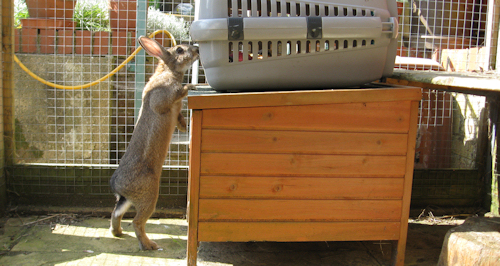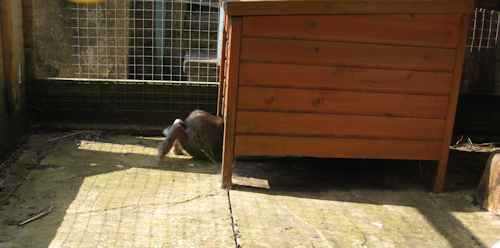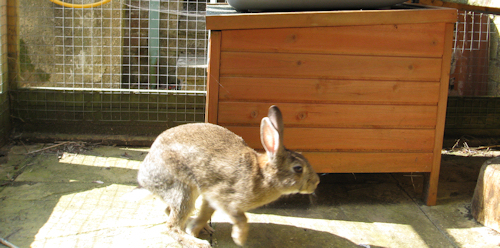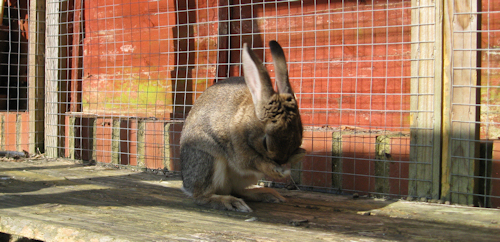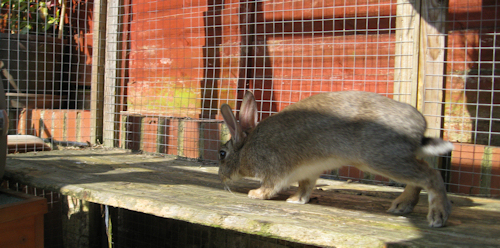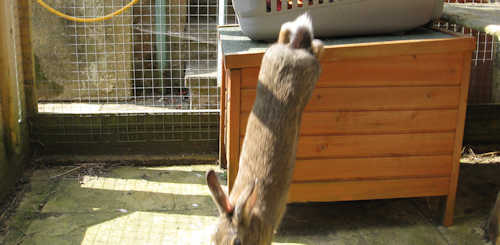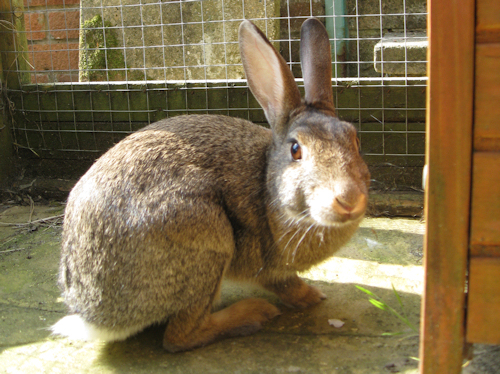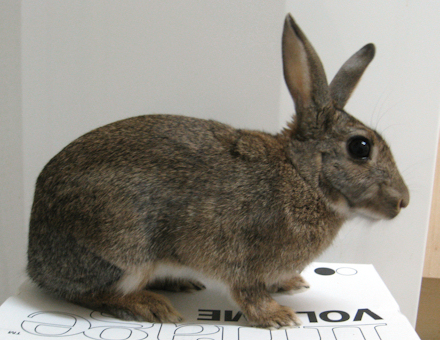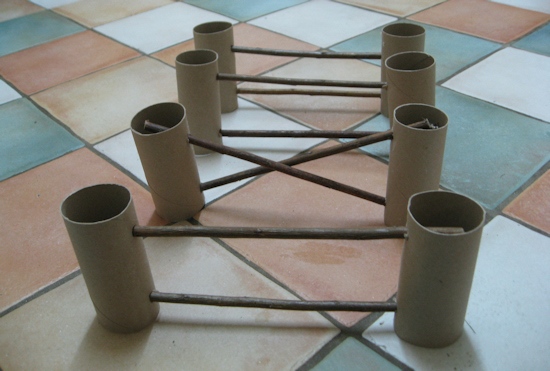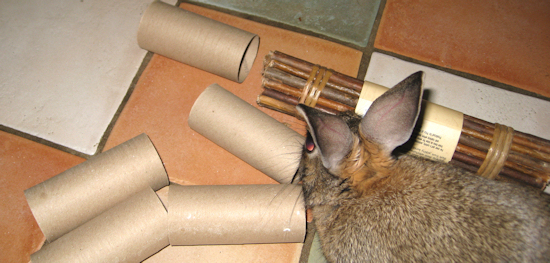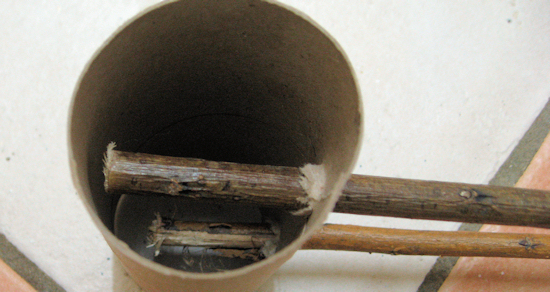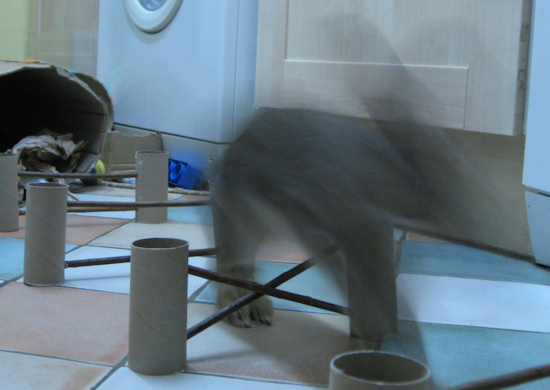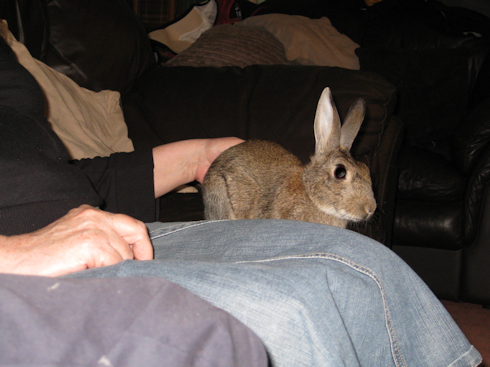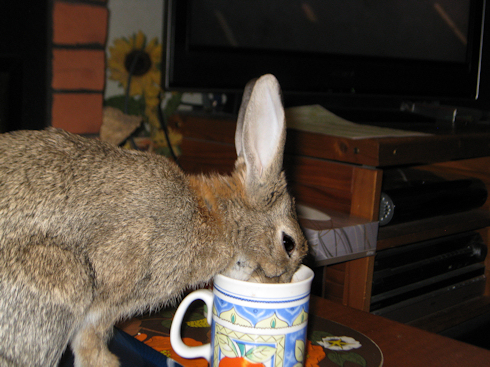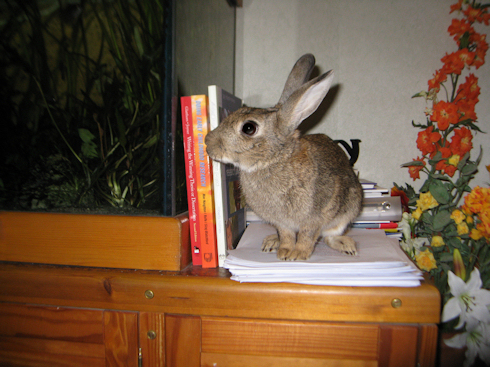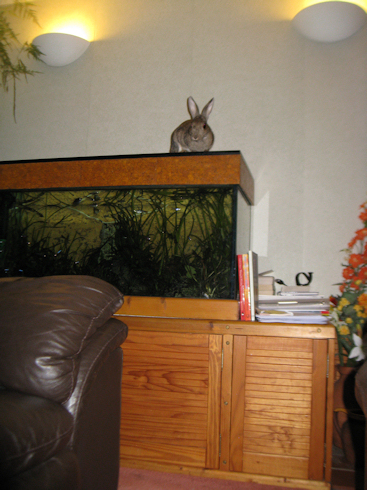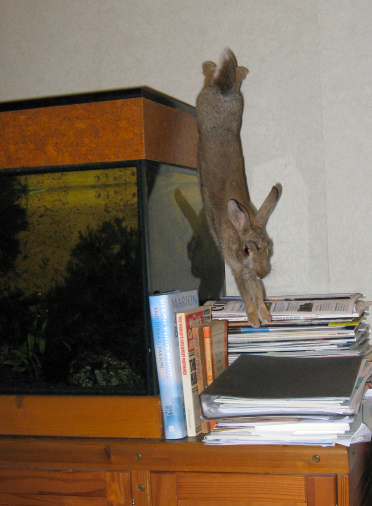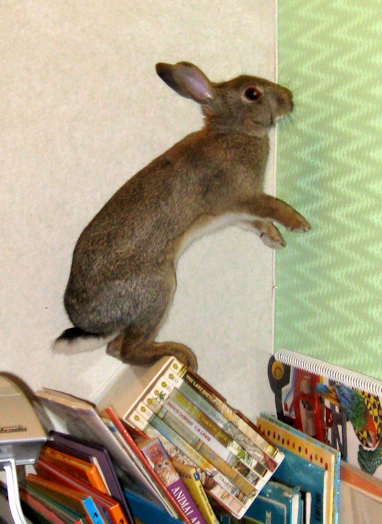The PDSA recently published the PDSA Animal Well-Being Report (PAW) investigating the current welfare of cats, dogs and rabbits in the UK. It’s great to see rabbits included and the report (which will be published annually) will be a great way to get a real measure of improvements year to year.
The report is split into five areas: environment, diet, behaviour, companionship and health. If you are familiar with the Animal Welfare Act, you’ll recognise these as linked to the needs that owners have a duty of care to provide for.
Environment
There are some sad statistics here, with 10% of rabbits living in a hutch they can only take 1-2 hops in and 16% in runs that are no bigger that the recommended size of a hutch. This is definitely an area that is in need of improvement because it has such a massive impact on a rabbit health and happiness. A rabbits home is it’s entire world and it needs to be large and stimulating. On the positive side, 16% of rabbits (240,000) live indoors. Although that doesn’t sound massively high that’s still 1 in 6. Although rabbits don’t have to live inside to have their needs met I think it’s an indication that people are recognising rabbit’s potential as house pets not just as a animal you can keep out of the way in the garden.
Diet
Diet is a more difficult area to measure because ideal diets can vary between rabbits. On the positive, 97% of rabbits eat hay or grass daily. That’s great as hay/grass is really important! The 3% that aren’t may include rabbits that are unable to eat hay (because of dental issues), their owners are unaware of the importance or they refuse hay because the are not used to it. The survey uses ‘a portion equal to their body size’ as the recommended daily amount. Obviously, they need an easy to answer question (most people don’t want to play about weighing hay) but that is a bit subjective. Is that scrunched down, loose, how do you judge how much a rabbit eats if grazing on grass etc.? Which may account for some of the 42% of people that say their rabbit eats less than this. Of course I’m sure over feeding dry foods factors in there too.
In terms of dry foods, 49% of owners report this is one of the main foods their rabbit eats. I think that’s certainly an area for improvement, as rabbits eating this are more likely to selectively feed and miss out on essential nutrients and also they are generally higher in calories and contribute to weight issues.
Behaviour
A long with environment, I think this is an area that gets a bit neglected. Owners often focus on diet and physical health, and mental health can get a bit overlooked unless a rabbit has a antisocial behaviour problem. Only 38% of bunnies played with toys daily and 24% dig daily. That’s quite low but it’s difficult to judge how much is down to the opportunities not being provided and how much is owner misinterpreting the questions. Not all rabbits have an inclination to dig daily. Yes, they should have the facilities to dig if they want, but an unneutered female is much more likely to dig than a neutered male, for example.
Speaking of behaviour problems, 28% of rabbits were not handled daily when young. Socialisation is really important, a lack of it makes rabbits more difficult to handle and more likely to be nervous of human interaction. These in turn make owners less likely to handle their rabbit or let it out for exercise. If a rabbits on it’s own then that has an even bigger impact on their well-being as they are then lacking in any social companionship, rabbit or human.
Companionship
A quite high, 67% of rabbits live alone. I realise I’m being slightly hypocritical because Scamp is an only rabbit, but I do believe that rabbits do best when they have the companionship of other bunnies. It would be interesting to see this broken down into indoor/outdoor rabbits. House rabbits generally spend more time in the company of humans which helps to mitigate the lack of rabbit contact.
Health
I think the statistics for neutering and vaccination are actually quite positive. 46% of rabbits are vaccinated, whilst this is low compared to cats and dogs (72% and 82% respectively) I think is positive when considered in the context of the attitude towards rabbits. Rabbits have a bit of a reputation as cheap & easy children’s pets, so for 46% to be vaccinated, I think shows quite a positive attitude towards care. It’s also common for people not realise that they need vaccinating, so a little more education to make people aware of the option and I think there is quite a bit of scope for a rise in this figure.
Not quite so many rabbits are neutered but 37% (compared to 89% cats,66% dogs) is still a fairly reasonable amount. Again, there is still some way to go with education to make people aware of the benefits. Neutering is often associated with preventing babies so considering the number of single rabbits (where neutering to prevent breeding isn’t necessary) I think again it’s quite positive. Making people aware of the other benefits of neutering e.g. litter training, preventing spraying/aggression might help increase this figure.
Cost of Ownership
81% of owners thought that the total lifetime cost of owning a rabbit would be less than £1k. This includes things like neutering, vaccinations, food, bedding, equipment etc. but not vet fees. The PDSA estimates the actual figure is more like £9k.
That’s a pretty clear demonstration that the myth rabbits are cheap pets is still out there. If your rabbit lives to 7yrs, you’d spend £200 just on vaccinations, add another £60-90 for neutering, several hundred pounds on a hutch, run and equipment and it’s easy to see under £1k is no where near realistic. And, if people underestimate these costs then it is likely they do the same with vet bills which are much harder to predict. This could well be one of the factors that contributes to rabbits ending up in rescue – their owners just can’t afford to care for them when they realise the true cost.
Educating people before they get a pet is definitely important, 30% of people found owning a rabbit ‘harder than they expected’. Again, underestimating the work involved in rabbit ownership is probably a contributing factor to rabbits ending up in rescue as well as those that remain with their owners but don’t get their needs met.
Conclusion
A little bit of positive news but also lots of areas for improvement. It will be exciting to see next years report as that will answer the important question… is welfare improving, getting worse or remaining static. It’s easy to feel that efforts to improve welfare aren’t getting anywhere particularly when you continually see individual animals whose needs aren’t being met. Hopefully an annual report measuring this factors each year will give a broader picture of animal welfare and show that things really are improving, even if sometimes it feels like you’re bashing your head against a brick wall.
